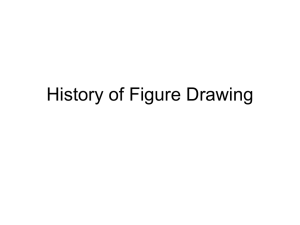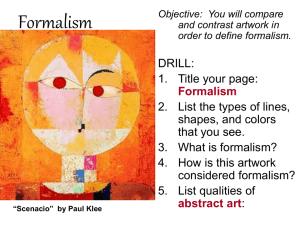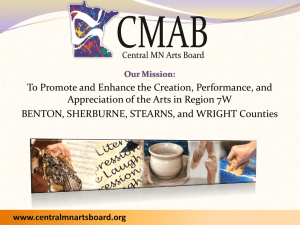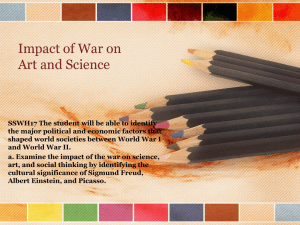Theories of Art: Imitationalism, Emotionalism, Formalism
advertisement
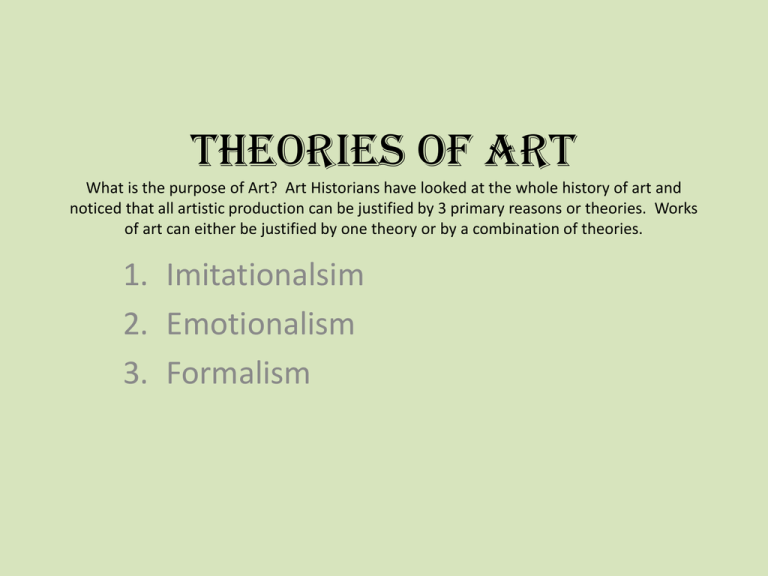
Theories of Art What is the purpose of Art? Art Historians have looked at the whole history of art and noticed that all artistic production can be justified by 3 primary reasons or theories. Works of art can either be justified by one theory or by a combination of theories. 1. Imitationalsim 2. Emotionalism 3. Formalism 1. Imitationalism • The purpose of Art is to imitate/recreate nature. – Many artists throughout history have sought this as one of the primary intentions of their work. – The Artist must recreate the world around him/her. The artwork must mirror reality. 1. Examples of Imitationalism Leonardo da Vinci, Mona Lisa, 1503-05 Leonardo da Vinci, Self Portrait, 1512 1. More Examples of Imitationalism study for Virgin and Child with St. Anne Leonardo da Vinci, Virgin and Child with St. Anne, 1510 2. Emotionalism • The purpose of art is to express the artist’s emotions, beliefs, feelings, and/or political views. – Many artists throughout history have felt that the primary purpose of art is for expression and communication. – The resemblance to reality in an artwork is only secondary in importance to the actual expressive quality of the work. 2. Examples of Emotionalism Pablo Picasso, Guernica, 1937 2. More Examples of Emotionalism Edward Munch, The Scream, 1893 Vincent Van Gogh, Trees in the Asylum Garden, 1889 3. Formalism • The purpose of art is to create forms and images that are pleasing to the eye. • Art must be an aesthetically pleasing arrangement of the elements (ingredients) of art. • The artwork is a beautiful object. Expression and the resemblance to reality are only secondary to its beauty and design. 3. Examples of Formalism Wassily Kandinsky, Black and Violet, 1923 Piet Mondrian, Composition with Red Yellow and Blue, 1921 Which theory? Imitationalism Emotionalism Formalism Which Theory? Which theory of Art do you think most influences the techniques you have learned? The techniques you have learned up to this point are influenced by the theory of Imitationalism. The other two theories will be investigated in later projects during the second semester. Imitationalism: art should imitate nature • Artists of the Italian Renaissance (1400’s –late 1500’s) mastered many techniques to achieve the goals of Imitationalism. • These artists really sought to understand and recreate the world around them in their paintings, drawings, and sculptures. • They constantly studied their environment and the people and things within it in order to understand how to recreate it. Italian Renaissance (1400’s –late 1500’s) • Began in Florence Italy • Eventually Spread throughout all of Europe • This period was characterized by new discoveries in the scientific study of the natural world. • the study of anatomy and nature allowed artists to achieve new heights in portraiture, landscapes, mythological, and religious paintings. • New discoveries in science and the exploration of other continents boosted man’s belief in himself and his abilities. They no longer saw themselves as hopeless beings in a cruel punishing and scary world. • They strived to fully understand and master the world around them. • These new understandings caused artists to want to turn their flat canvases into windows into another world. • Trompe Loeil: “to fool the eye.”Every artist during this period, wanted to achieve Trompe Loeil. • Three techniques mastered during the Renaissance allowed artists to create the illusion of depth in their paintings: – Chiaroscuro – Linear perspective – Atmospheric perspective • Chiaroscuro: (Key-arrow-Skew-Row) a method mastered during the Renaissance. It allowed artists to create the illusion of form on a flat surface with the use of light and shadow. • Linear perspective: creates the illusion of space by using a horizon line, receding angles, and a vanishing point. This works on the premise that parallel lines receding in space meet at a vanishing point. • Atmospheric perspective: this method creates the illusion of depth by placing more emphasis and detail on objects in the foreground. AS objects recede into space they lose detail and are covered with more atmospheric haze. • • • • Leonardo Da Vinci 1452-1519 Known as the true Renaissance man. A painter, architect, inventor, writer, poet, and sculptor. Meticulously studied everything he can through sketches and drawings. Some were used for later paintings while most were compiled into journals and notebooks. • He combined the practices of scientific study and artistic production, and has become the icon of this era. • Constantly distracted by other projects. He left many projects unfinished because would constantly begin new projects or jump around between several projects at a time. Leonardo Da Vinci Leonardo’s The Last Supper, 1495 You will be applying these techniques to: • Portraiture: a work of art that depicts a human subject and his/ her identity as its subject matter. Self portrait-the artist is the subject. • Still Life: A work of art that depicts inanimate objects as its subject matter. • Landscape: A work of art that depicts an outdoor scene of nature as its subject matter. You must never: • • • • • • • Run with scissors. Play in the streets. Drive and text. Throw sharp objects. Eat undercooked chicken. Use hateful language. Timothy



